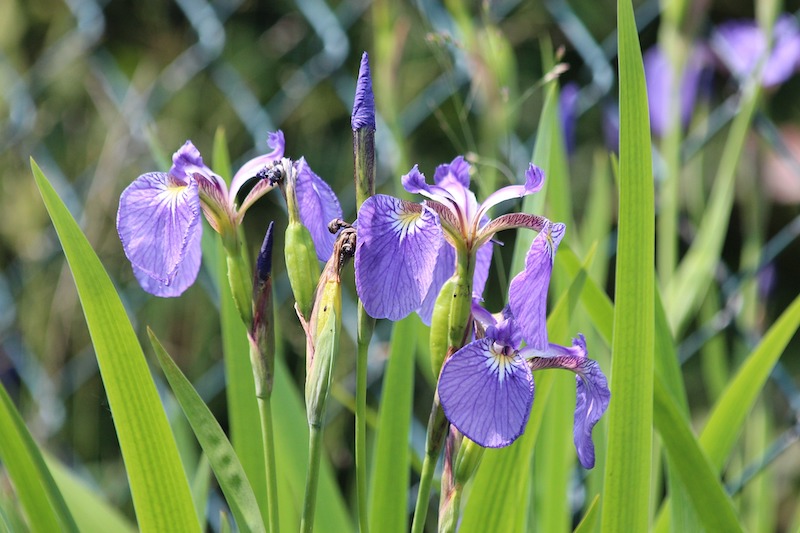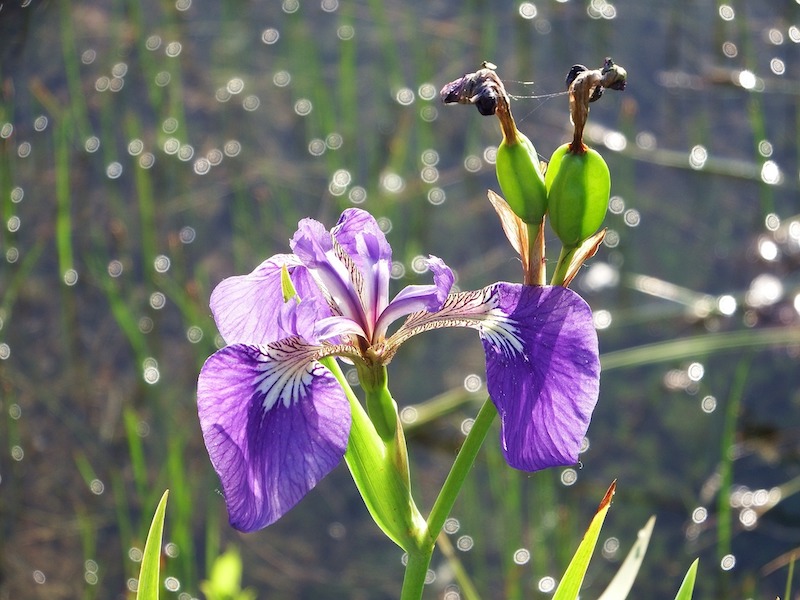Iris is an herbaceous perennial that requires minimal maintenance to perform at its best. Deadheading of the spent flowers and a seasonal cutback of the foliage will ensure that your iris grows vigorously for many years.

When to Prune Iris
Cut back the fan-shaped leaves of iris after they turn yellow from the first frost of fall. Allowing the leaves to remain all summer, well after the flowers have stopped blooming, helps the plant to gather energy for vigorous growth and heavy blooming the following year. Cutting the foliage down too quickly in the summer will greatly reduce the strength of the plant. Damaged leaves can be cut back by half and left on the iris.
Deadheading is the second type of pruning that all irises need. The flowers should be cut back all of the way to the ground after they have finished blooming and before the plant can set seed. Irises that are allowed to set seed may have a severe reduction in their blooming strength the following year. Cutting the whole flower stem back makes for an overall neater-looking plant.

Why Prune Iris
Pruning iris seasonally helps with garden hygiene and is part of the maintenance of this plant. Most diseases or pests of iris overwinter deep in the fans of the leaves, no matter which USDA growing zone you garden in. Removing the leaves makes for much cleaner plants that are healthier and able to withstand attacks from outside pathogens.
How to Prune Iris
Step 1 - Deadhead spent flowers
Cut the flower stems as far back into the fan of foliage as possible. This keeps the plant from using energy to develop seeds.
Step 2 - Cut back any leaves that become damaged during the growing season.
Damaged leaves should be cut back by only half, allowing the rest of the leaf to photosynthesize for as long as possible.
Step 3 - Remove all foliage after the first frost.
Cut down the foliage to the ground in the fall after it has been killed off by frost. Removing the leaves prevents pests and diseases from overwintering on the plant.
Step 4 - Cut back the foliage when transplanting.
Always cut back the foliage by half when dividing and transplanting iris. The plants will be able to put more energy into establishing a good root system without having to support large amounts of top growth.
Iris Pruning Tips
- Deadhead spent flowers
- Cut back all foliage after the first frost in the fall
- Cut back leaf height by half at transplanting time
- Cut off any damaged leaf parts during the growing season
 |
Author Robbin Small - Published 4-18-2023 |
